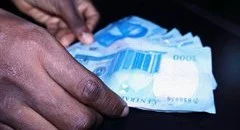[Festival of Media] Colombian coffee meets the challenge
![[Festival of Media] Colombian coffee meets the challenge](https://biz-file.com/c/1004/48162.jpg)
Colombia has a somewhat dubious reputation as a supply centre for drugs into the US and elsewhere, but it also has a well-deserved reputation as the home of one of the world's best coffees, and the issue that Luis Fernando Samper, director, intellectual property, Juan Valdez Café, Colombia's coffee brand faced was: how to develop an intellectual property based on the strategy for marketing and protecting Colombian coffee and Juan Valdez applications.
A chequered history
Colombian coffee has a somewhat chequered history. Back in the 1950s, the price fell from US$.85 to US$.45 through oversupply. The other was this: only 4% of consumers recognised Colombia as a producer of premium coffee and this was exacerbated by the fact that roasters tended to dominate the market and hide the country of origin in order to gain more flexibility in blends. Colombia was a supplier of premium coffee - but few consumers actually knew that, or it didn't really register as an issue of any importance.
Hence, an important decision was taken to create a marketing organisation to market the South American country's coffee, and the challenge here was the number of farmers involved and the need to get them to speak with one voice. Even today, some 278 716 of Colombian coffee growers farm on less then 1ha, a further 204 863 farm on 5ha or less and fewer than 28 000 or so have 5-20ha or more. That means that 94% of Colombian growers have farms less than 5ha, and one can understand that when you have not far short of half a million growers to represent, you will have a good chance of a very wide range of views on how their product can be best marketed.
“We had to get growers to agree on common goals that they could not achieve individually,” says Samper, “and our strategy was to give the country of origin relevance.”
In short - Colombia.
The result was the creation of a marketing organisation, the Colombian Coffee Growers' Federation (La Federación Nacional de Cafeteros de Colombia) or FNC, which is structured democratically and in which the growers elect their own representatives. Samper says the industry decided to take the road towards origin differentiation; and part of the strategy was to create a character that would be recognised as the symbol of Colombian coffee - so in 1960 the Juan Valdez character was created with one aim to make sure consumers would demand Colombian coffee; by 2005 Juan Valdez was a highly recognised icon with 31 million impressions in that year.
If it's good coffee, it must be Colombian
The aim was to ensure distribution by offering 100% Colombian coffee brands and by 1980 the campaign's brand strategy had paid off and a new segment was created in the coffee category - 100% Colombian coffee.
“However, our brand architecture and strategy needed to evolve as no single ingredient would communicate the options inherent in Colombian coffee, so our aim was to become relevant at different price points and locations,” says Samper.
Hence, the Colombian beverage was marketed as a breakfast, mid-morning, lunch, mid-afternoon and dinner refreshment.
“Our strategy was to take into account occasion, different needs, and location and provide significant exposure to the brand and Colombian coffee in general,” says Samper.
The result is that this brand strategy has helped reposition Colombian coffee in the speciality category and this has had the spin-off of generating B2B demand for speciality coffees from Colombia in at higher prices.
Taking a leaf out of the wine industry book
One of the ways Juan Valdez Café aimed to achieve this distinction and uniqueness was by borrowing from the wine industry. When you think of champagne, you think of France, right? So the aim was to create an association between great coffee and Colombia.
“We had to make the country of origin of relevance,” he said, emphasising the importance of heritage.
The message in the barcode
One result of the new drive is using the barcode, entering it online and being able to track the product.
“Taking a virtual journey, you can see where your coffee came from,” he says, and in so doing, consumers will be able to learn a great deal about the coffee they are enjoying and get an insight into the whole process. By the end of the virtual journey, the consumer will be something of an expert on the product they have just enjoyed.
This should help build consumer loyalty since they will be more comfortable in being able to see how the product is produced, its sustainability, and other issues surrounding its production.
However, no matter how good the product, naturally innovation is key to continued success, so new and innovative ways to market the Juan Valdez Café product will continue.
Despite the success the marketing efforts have achieved, innovation and development have never been neglected says Samper: “We need to evolve with the emerging consumption needs.”
Bizcommunity.com is the Festival of Media's African media partner.
For more:
- Bizcommunity Search: Festival of Media
- Official site: www.festivalofmedia.com.
- Official news: www.festivalofmedia.com/news
- Revised agenda:www.festivalofmedia.com/agenda
- Twitter search: #FOM2010
- Google News Search: Festival of Media
























